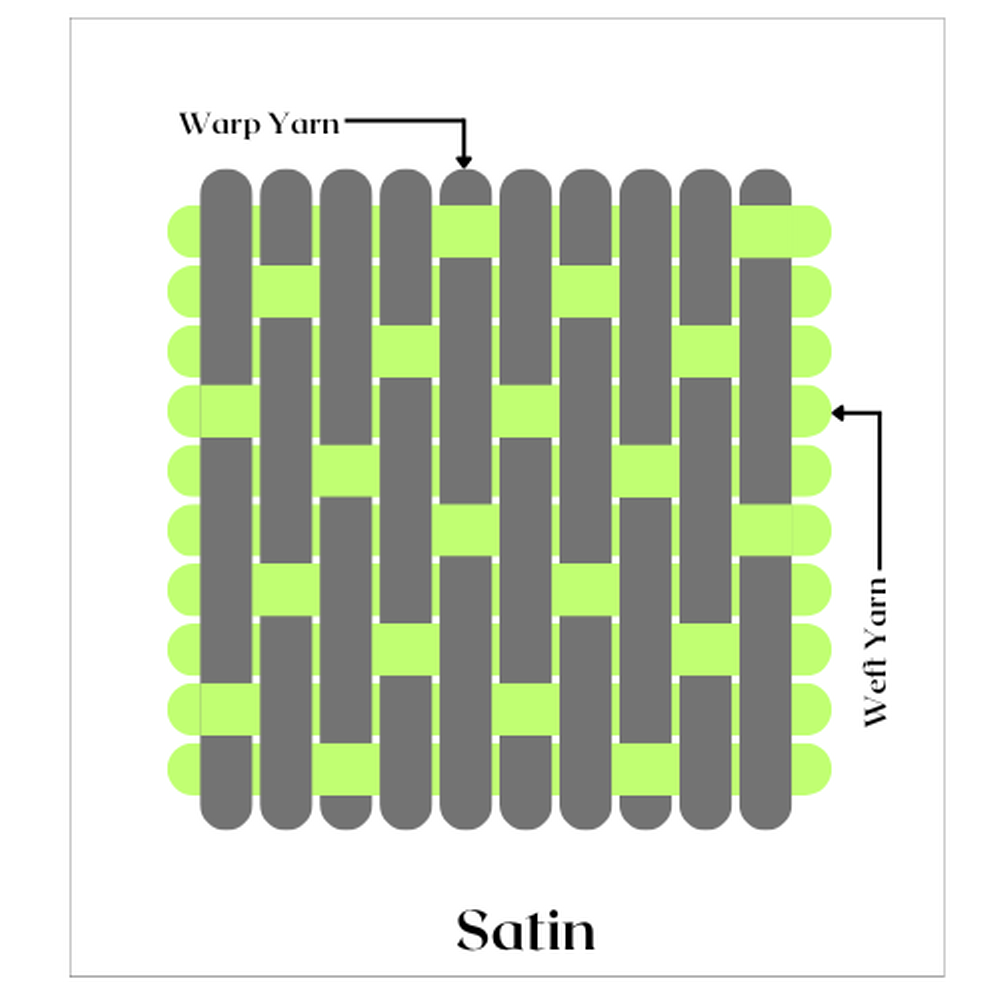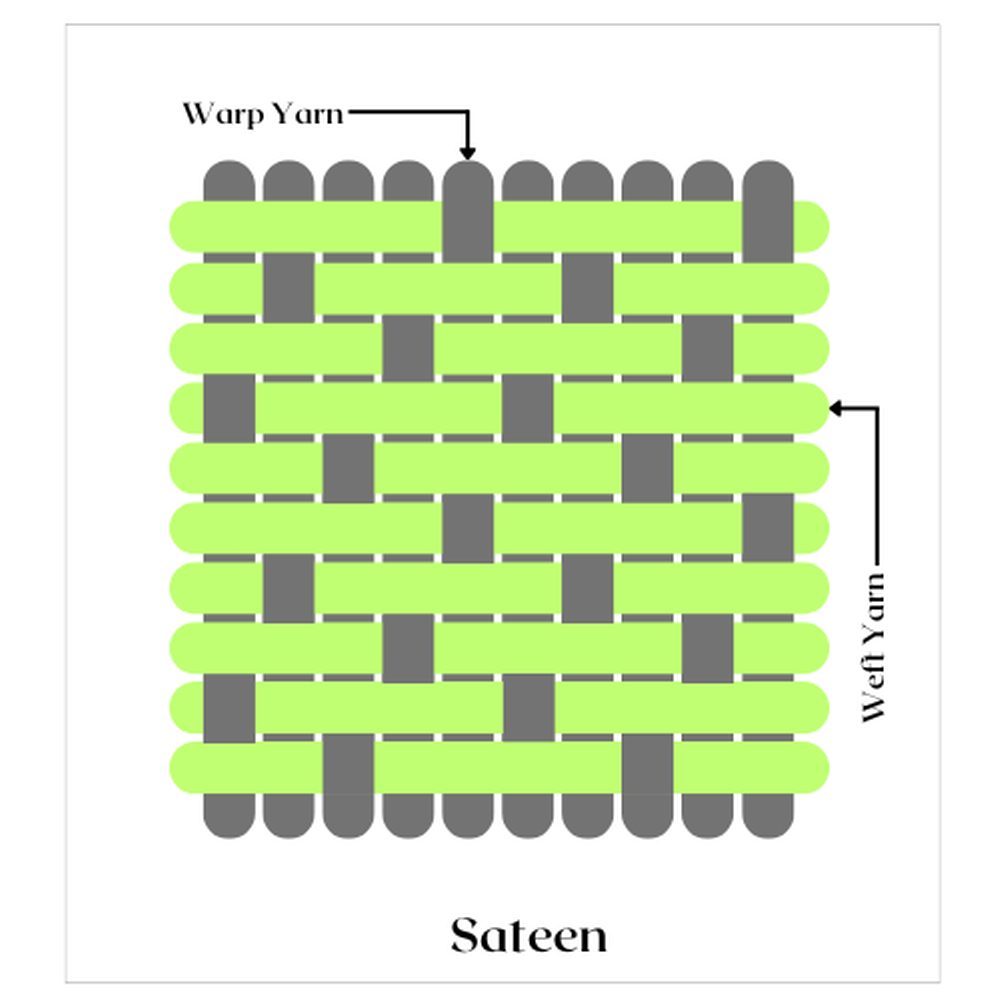- D. Marikkar with Editorial Edits
- News
- 0 likes
- 770 views
- 0 comments
Selecting the right bed sheets can significantly enhance your sleep quality and bedroom aesthetic. Among the various options available on the market, satin and sateen sheets are popular for their unique textures and appearances. Understanding the differences between these fabrics is essential for general consumers and hoteliers seeking to make an informed decision that marries style with functionality. With each option offering unique benefits, the choice often boils down to personal preferences and specific needs, making the debate of satin vs. sateen sheets more relevant than ever.
From the shimmering elegance of satin to the cozy comfort of sateen, this comparative analysis of their distinctive qualities will guide consumers through the decision-making process, ensuring a selection that enhances the sleeping experience and complements the bedroom's décor.
What Are Satin and Sateen?
Satin: The Really Premium Choice
Satin is said to have its origins in medieval China, dating back to the 12th century, where it was first made using silk. The name "satin" itself is derived from "Zaitun," an Arabic name for the Chinese port city of Quanzhou, a major trade center for silk and other textiles. Satin is traditionally crafted from natural filament fibers like silk; however, modern-day satin can also be produced from synthetic fibers like polyester, nylon, or blends of these materials. This diversity in material composition allows for a range of textures and properties, catering to different preferences and needs.
Satin is characterized by a signature weaving technique where the warp yarns are predominant over the weft yarns, resulting in a four-over-one-under pattern as shown below:

Sometimes, based on the manufacturer's design, this pattern can vary to five or eight-over-one-under patterns. These variations create long floats on the fabric's surface, forming a smooth, uninterrupted surface that reflects light evenly, resulting in a shiny appearance on one side of the fabric and a duller surface on the other. As the weave has fewer intersections between the warp and weft yarns compared to other weaves, it reduces points where light can scatter and enhances the fabric's overall smoothness and sheen.
Thread count in satin sheets can also affect their feel and quality. Typically, satin sheets have a thread count ranging from 200 - 400 threads per square inch, depending on the material used. Higher thread counts in satin can lead to an even smoother and more luxurious finish.
The lustrous sheen and glossiness of satin are attributed to its signature weaving technique as well as the fibers used in weaving. The natural filament and synthetic fibers used in weaving are long-continuous fibers, allowing for a seamless finish that enhances the fabric's soft, silky texture. This satin texture is gentle on the skin and hair, reducing friction and promoting good hair and skin health. Additionally, the fabric also has low thermal conductivity, which helps maintain a comfortable body temperature, making satin sheets ideal for both warm and cool climates while also enhancing comfort sleep and offering a blend of elegance.
Sateen: The Soft and Practical Option
Sateen has its roots in later textile developments and is known for its distinctive weaving technique and the use of long-staple cotton fibers. While sateen is primarily crafted from these long-staple cotton fibers, which are then spun into yarns to create a fabric that is soft, smooth, and subtly lustrous, it can also be made from other materials like polyester, rayon, and lyocell.
The use of long-staple cotton fibers in sateen contributes significantly to the fabric's durability, breathability, and softness, as it utilizes 100% of the fiber in the weaving process. The diverse choice in the availability of other materials further enhances its adaptability to different preferences, allowing sateen sheets to offer a variety of textures and properties. Sateen sheets are also recognized for their resistance to wrinkles and their drape-like quality, which contributes to a neat and well-kept bed aesthetic.
Thread count plays a crucial role in the feel and quality of sateen sheets. Typically, sateen sheets have a higher thread count, often ranging from 300 - 600 threads per square inch, which contributes to their smooth and luxurious feel. The higher thread count results in a denser, more durable fabric that retains its softness and luster over time.
The weaving technique used for sateen is similar to that of satin but reversed. In sateen, the weft yarns are predominant over the warp yarns, creating a pattern with one yarn under and four yarns over, as shown below:

This technique results in a dense weave that enhances the fabric's sheen, smooth feel, and durability, making it an excellent choice for customers seeking long-lasting and practical bedding.
Sateen's combination of softness, durability, and subtle sheen makes it a popular choice for those looking for comfortable yet elegant bedding. The fabric's breathability and ability to regulate temperature further enhance sleep quality, making sateen sheets suitable for various climates and seasons.
Comparative Analysis: Satin vs. Sateen Bed Sheets
Comfort and Feel
Satin Sheets
Satin sheets are renowned for their cool, smooth texture. The glossy finish feels luxurious against the skin, making satin an excellent choice for those who appreciate a high-gloss, silky surface. The sleek texture can help reduce friction, benefiting hair and skin by minimizing breakage and wrinkles.
However, satin’s slipperiness can be a downside. Sheets and pillowcases may shift during the night, potentially causing discomfort. Additionally, the cool feel of satin, while pleasant in warm climates, might feel too cold in cooler environments.
Sateen Sheets
Sateen sheets offer a softer, more substantial feel compared to satin. The fabric’s gentle texture is comforting and less slippery, making it a favorite for those who prefer a cozy bed. Sateen is breathable, providing comfort across different seasons and helping to regulate temperatures effectively.
While sateen does not offer the same cool sensation as satin, its breathable nature makes it suitable for various climates, providing a balanced sleeping experience all year-round.
Appearance
Satin
The hallmark of satin is its high-gloss finish, adding a touch of elegance to any bedroom. Satin sheets are visually striking, with a sheen that catches the light beautifully. This glossy appearance makes satin a popular choice for formal settings and upscale decor.
However, the shiny look may not appeal to everyone, and some might find it too flashy for their taste. The high-gloss finish can also highlight any imperfections or wrinkles, requiring careful handling and maintenance to keep up its luxurious appearance.
Sateen
Sateen offers a more subdued, matte finish with a subtle sheen. While less glossy than satin, sateen’s appearance is still elegant and refined. This makes it versatile and suitable for a variety of bedroom styles, from contemporary to classic.
The less reflective surface of sateen is often preferred for its understated elegance, making it a practical choice for both everyday use and more formal settings.
Temperature Regulation
Satin
Satin’s cool feel is ideal for hot sleepers or those living in warm climates. The smooth surface remains cool to the touch, providing a refreshing sensation that can help regulate the body temperature during hot nights.
However, this same quality may make satin sheets less appealing in cooler climates or for those who prefer a warmer, cozier bed. Satin’s tendency to remain cool might not provide the desired comfort during cold weather.
Sateen
Sateen excels at providing a balanced sleeping environment. Its breathable nature helps regulate temperatures, making it comfortable in both warm and cool climates. This versatility makes sateen sheets suitable for year-round use, adapting well to seasonal changes.
While sateen does not offer the immediate cool sensation of satin, its overall comfort and temperature regulation capabilities make it a reliable choice for most sleepers.
Durability and Maintenance
Satin
Satin sheets, especially those made from silk, are delicate and require special care. They are prone to snags and wear, and often need to be hand-washed or cleaned using a gentle cycle. Satin’s delicate nature means it may not withstand the rigors of everyday use as well as other fabrics.
For those willing to invest time in maintenance, satin offers unmatched luxury. However, its susceptibility to damage and the need for careful handling can be a drawback for those seeking low-maintenance bedding.
Sateen
Sateen sheets are generally more durable and easier to care for compared to satin. Made from cotton, sateen can often be machine-washed and is less prone to snags and tears. Its durability makes it well-suited for regular use, providing a good balance between comfort and longevity.
Sateen’s ease of care and resistance to wear make it a practical choice for both home and hospitality settings, where frequent washing and durability are essential.
Cost
Satin
The cost of satin sheets varies widely depending on the material. Silk satin, being the most luxurious option, is also the most expensive. Synthetic satin alternatives are more affordable but may not provide the same level of comfort and feel.
Investing in satin sheets is often seen as paying for the luxurious feel and aesthetic appeal, making it a worthwhile expense for those seeking high-end bedding.
Sateen
Sateen sheets are typically more affordable, especially when made from cotton. They offer good value for money, providing a comfortable and elegant feel without the high price tag associated with silk satin.
For those looking for high-quality bedding at a reasonable cost, sateen provides an excellent balance between affordability and comfort.
Conclusion
In the debate between satin and sateen bed sheets, the best choice depends on individual preferences and practical considerations. Satin offers a luxurious, cool feel with a high-gloss finish, ideal for those seeking elegance and benefits for hair and skin. However, its delicate nature and care requirements can be a downside for everyday use.
Sateen, with its soft, breathable texture and subtle sheen, provides comfort and practicality, making it suitable for a wide range of climates and uses. Its durability and ease of care make it a preferred option for both home and hotel settings.
Ultimately, the decision comes down to balancing the desire for luxury with the need for practicality. By understanding the unique qualities of each fabric, consumers and hoteliers can select the bedding that best meets their needs, ensuring a comfortable and stylish sleeping environment.
We’d Love to Hear From You!
Do you have a preference for satin or sateen bed sheets? Share your thoughts and experiences in the comments below. Your insights could help others make the right choice for their bedding needs.
 EN
EN  اللغة العربية
اللغة العربية
Comments (0)